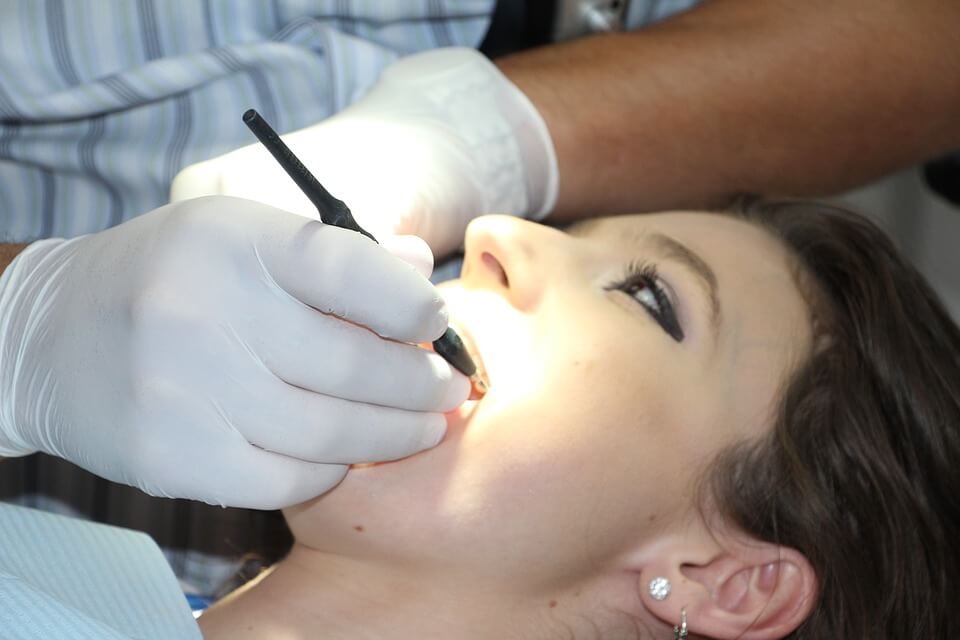A Guide to Dental Restoration Treatments Available at Your Dentist
Tooth damage is not the end of the world.
While damage might be startling at first, chips, cracks, missing teeth, and tooth decay can all be treated promptly and effectively thanks to restorative dentistry.
With a visit to your dentist, you can restore your smile to its former glory and get back to eating properly with a dental restoration.
Lets’ take a look at some of the most common dental problems and how your dentist can help you address them:

CHIPPED OR CRACKED TEETH
Chipped and cracked teeth often occur while eating hard foods or experiencing trauma to the mouth.
Chipped tooth repair is a common dental procedure. And depending on the severity of the chip or crack, your dentist will use one of the following treatments for broken tooth repair.
Dental Filling or Bonding
For minor damage, such as a small piece of enamel chipped off, your dentist might repair the chipped tooth with a filling. If the chipped tooth is noticeable when you smile, especially if the damage is on a front tooth, your dentist will most likely use a simple bonding procedure on the tooth.
Bonding is a tooth-coloured composite resin used to repair chipped teeth and reshape or lengthen the front teeth.
Crowns
If a large piece of your tooth breaks off, or your tooth has a lot of decay, your dentist might file down your tooth and place a dental crown on top.
Dental crowns are tooth-shaped caps that protect your tooth and function like a tooth.

Crowns are made using an impression from your tooth and can be made out of ceramic, resin, metal, or porcelain fused to metal.
Veneers
If your front tooth is broken or chipped, your dentist might bond or cement a veneer on your tooth.
A dental veneer is a thin shell of porcelain or composite resin that covers the front of the tooth and has a thicker section that replaces the broken part of the tooth.
Inlays & Onlays
An inlay is a cemented dental restoration that can restore up to three surfaces of a tooth. It can be made from gold, porcelain, or other types of ceramic materials.
Onlays are made from the same materials as inlays and are another cemented dental restoration. Onlays restore the chewing surface and part of the surface along the sides of the teeth in the back of the mouth.
An inlay lies within the cusp of the tooth whereas an onlay covers one or more cusp tips.
Root Canal Therapy
For large cracks and breaks that expose the pulp of the tooth and lead to damaged pulp, your dentist might perform root canal therapy. With this dental restoration, your dentist will remove the damaged pulp and seal the tooth before placing a crown on top.
CAVITIES & DECAY
Cavities occur after prolonged tooth decay.
Tooth decay involves an infection of bacteria in your mouth feeding off sugar from foods and making acids that wear down your tooth enamel.
Over time, the enamel is destroyed, and a cavity develops.
Cavities are permanent damage to your teeth that require fillings.

Fillings are made with metal, composite resin, or porcelain and are used to restore the surface of teeth.
If the bacterial infection of tooth decay reaches the dental pulp of a tooth, your dentist will likely need to perform root canal therapy to remove the decayed pulp and restore your tooth. If the tooth is too far gone to repair with a root canal, your dentist will need to remove the dead tooth and use one of the following treatments for missing teeth.
MISSING TEETH
Missing teeth are often the result of trauma to the mouth (e.g., getting hit in the face) or dental extraction. If you have missing teeth, be sure to visit your dentist as soon as possible for treatment.
Eating with missing teeth can place extra stress on your remaining teeth, and the gaps can be vulnerable places for bacteria to build up.
Thankfully, these treatments can help address the problems caused by missing teeth:
Bridges
A dental bridge is a prosthetic replacement of one or more natural teeth. Bridges attach to adjacent teeth with dental crowns and have a replacement tooth or teeth (called pontics) attached to the crowns, bridging the gap of missing teeth.
Removable Partials
Partials replace missing teeth but are not permanent. Partials have artificial teeth attached to natural teeth with the use of retainers.
Partials are not cemented to the teeth like the crowns in bridges so they can be removed and are not usually worn during sleep.
Implant
A dental implant is a permanent solution to replace missing teeth. The dental implant involves placing a titanium screw in the jaw bone and connecting a crown to the titanium implant.
Tooth Enamel Wear & Damage
The acid formed by bacteria in your mouth will wear down your tooth enamel over time. And as mentioned previously, worn down enamel can result in cavities and tooth decay if left untreated.
Tooth erosion repair involves reversing the enamel erosion by rebuilding the enamel in your teeth. Tooth enamel repair occurs naturally using the minerals from your saliva. Fluoride from toothpaste and fluoridated tap water also help to rebuild tooth enamel.
Along with brushing your teeth with fluoride toothpaste after eating and drinking starchy and sugary food and drinks, your dentist might also recommend one of the following treatments to promote tooth enamel repair:
- Applying a fluoride gel or varnish to the surface of your teeth;
- Taking prescribed fluoride tablets; and,
- Using a fluoride mouth rinse.

DAMAGE ISN’T THE END OF THE WORLD
Thanks to advancements in restorative dentistry, repairing damaged teeth is often quick and painless. So if you notice damage to your teeth, don’t fret. A visit to your dentist will resolve the issue so your teeth will look and feel like normal again.
Read More: IN-OFFICE VS. AT-HOME TEETH WHITENING
HOW RESTORATIVE DENTISTRY HELPS YOU
Restorative dentistry diagnosis, prevents, and treats dental diseases along with repairing damaged teeth. Whether your teeth are chipped, cracked, discoloured, missing, or decayed, your dentist can help restore your teeth back to normal with crowns, implants, bridges, fillings, fluoride treatments, and other natural-looking dental restorations.

